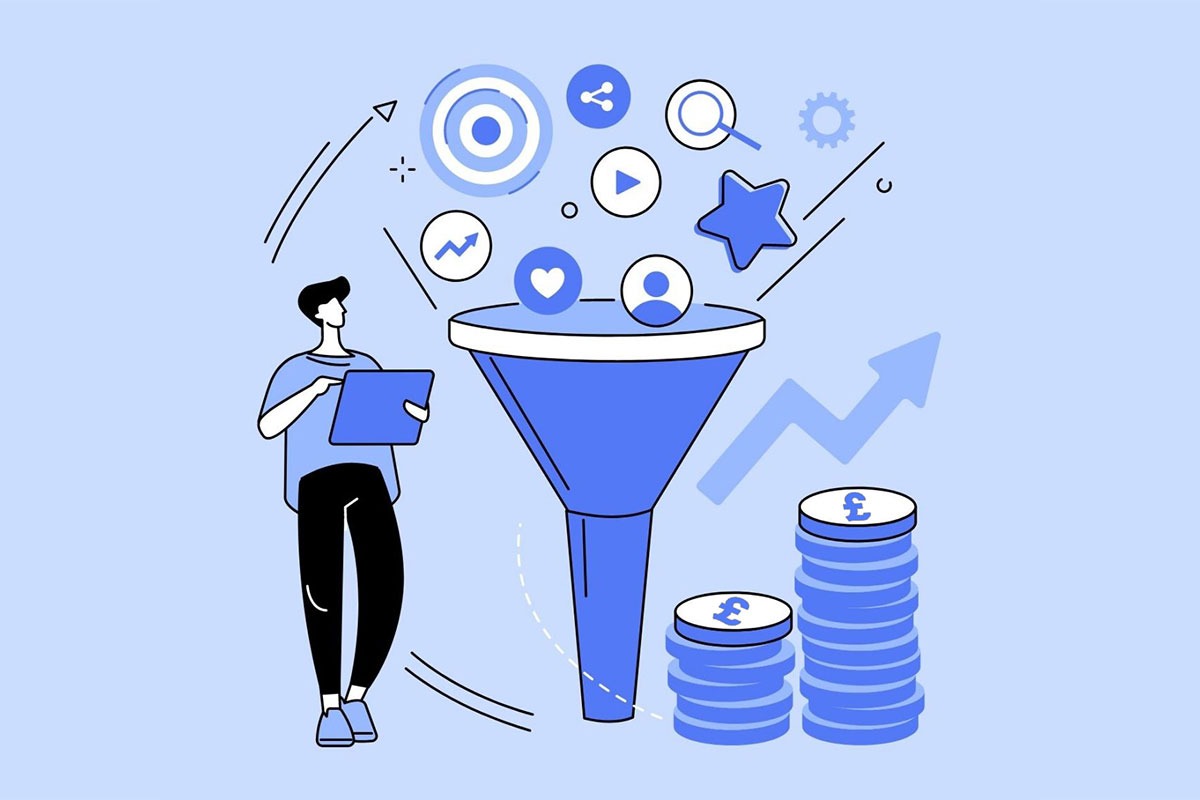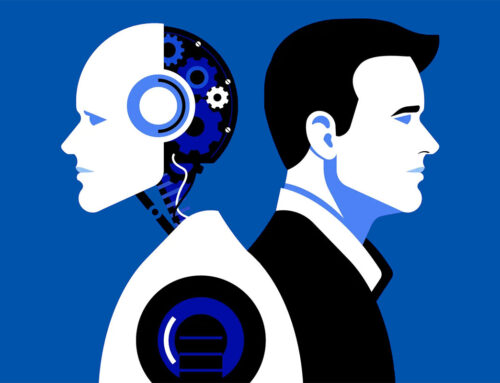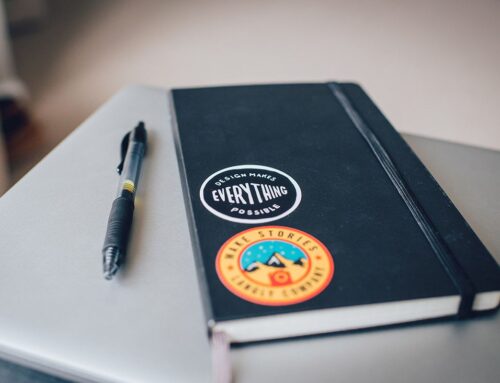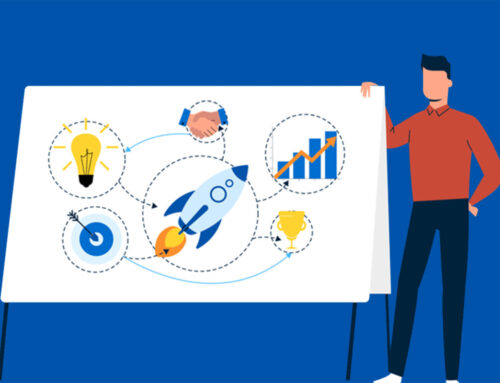Strategic Funnel Marketing
Marketing today is more than just promoting your product or service, but guiding your audience through a thoughtfully designed journey that leads them from initial awareness to loyalty. This journey is captured in strategic funnel marketing, a model that maps each stage of a customer’s relationship with your brand.
By aligning your marketing strategies with the funnel structure, you can strategically nurture prospects, convert them into loyal customers, and build lasting brand relationships. This article explores the stages of the funnel, practical optimisation tips, and how to incorporate a loyalty phase into your funnel strategy.
What is the Marketing Funnel?
The marketing funnel is a framework that represents the customer journey, from their first interaction with your brand to becoming a repeat customer. It’s visualised as a funnel because the number of prospects narrows as they move through each stage.
The funnel helps businesses:
- Understand audience needs and behaviours.
- Tailor messaging to specific stages of the journey.
- Optimise conversion rates by addressing barriers at each step.
A well-crafted funnel ensures a seamless, customer-centric experience while fostering loyalty.
Stages of the Marketing Funnel
The traditional funnel has four main stages, but modern strategies extend it to include loyalty as a crucial final phase.
Awareness
At the top of the funnel, your goal is visibility. This is where you introduce your brand to a wide audience and spark curiosity. Effective strategies include:
- Search Engine Optimisation (SEO): Boost organic traffic by targeting relevant keywords.
- Introducing fresh, relevant, and authoritative content to your website that attracts visitors through organic search results.
- Paid Ads: Run targeted campaigns to reach your desired audience.
- Social Media Campaigns: Increase brand exposure and engagement.
Content at this stage should focus on solving problems or educating your audience rather than pushing a sale. Blog posts, infographics, and explainer videos work well here.
Interest
After gaining awareness, the next step is nurturing engagement. Here, your goal is to build a deeper connection with your audience. Strategies may include:
- Email Campaigns: Share educational and value-driven content.
- Case Studies: Showcase real-world applications of your product or service.
- Social Proof: Use testimonials and reviews to build trust.
Position your brand as a trusted resource by providing valuable insights and fostering a genuine connection.
Consideration
At this stage, prospects evaluate their options. It’s critical to differentiate yourself from competitors. Strategies may include:
- Product Comparisons: Demonstrate your unique advantages.
- Webinars and Demos: Provide in-depth insights into your offerings.
- FAQs and Q&A Sessions: Address potential objections and reinforce your credibility.
By focusing on your unique value proposition, you can guide prospects closer to a decision.
Decision
This is where the prospect is ready to convert. Your job is to make the decision easy and compelling. Simple techniques include:
- Limited-Time Offers: Create urgency with special promotions.
- Free Trials: Allow prospects to experience your product risk-free.
- Personalised Emails: Send tailored follow-ups that close the deal.
These simple examples do not always apply, and careful consideration must be given to your brand, competition, value and target audience. Needless to say, a seamless and satisfying purchase experience sets the stage for future loyalty.
Loyalty
The final and often overlooked stage is loyalty. This phase is about nurturing long-term relationships with your customers. Loyal customers not only return for repeat purchases but also become advocates for your brand. Key strategies include:
- Exclusive Rewards: Offer loyalty programs or special perks for repeat customers or those providing testimony.
- Post-Purchase Engagement: Send thank-you emails, request feedback, and share helpful resources.
- Community Building: Create a space (like a forum or social media group) for customers to engage with your brand and each other.
Fostering loyalty transforms one-time buyers into lifelong customers who amplify your brand through word-of-mouth.
Strategic Funnel Marketing Tips
Building an effective funnel requires strategy and attention to detail. Here are actionable tips:
- Leverage User-Generated Content
Encourage customers to share testimonials or reviews to build trust at every stage. - Blend Blog Content with Email Follow-Up
Use blogs to attract leads and emails to nurture them further. - Use Personalised Email Campaigns
Segment your audience and deliver relevant, timely messages. - Focus on FAQs
Address common concerns through content, positioning your brand as a go-to resource. - Align Touchpoints with the Customer Journey
Meet your audience where they are, whether that’s on LinkedIn, Instagram, Facebook or elsewhere. - Create Comparison Page Funnels
Make it easy for prospects to understand your unique benefits. - Ensure Consistency Across Channels
Maintain cohesive branding and messaging for a seamless user experience. - Reward Loyalty
Develop post-purchase strategies to keep customers engaged and satisfied.
Marketing Funnel – A Simple Example
This simple example of an effective marketing funnel shows the prospect’s journey from awareness through to conversion and loyalty.
Awareness
A potential customer discovers your brand through a blog post answering a common industry question.
Interest
They sign up for your newsletter and start receiving informative emails tailored to their challenges, maintaining contact and trust with your business.
Consideration
The potential customer is in the market to make a purchase, receiving a well-timed email from your business, with links to targeted products/ services on your website.
Decision
Upon visiting your website, a limited-time offer provides an added value proposition encouraging the prospect to convert to a sale.
Loyalty
After their purchase, you invite them to join a loyalty program offering exclusive benefits, and they become repeat customers and advocates.
Getting Your Marketing Funnel Strategy Right
A successful funnel requires continuous monitoring and refinement.
Analyse performance metrics such as conversion rates, engagement levels, and drop-off points – every metric percentage counts as the number of potential customers reduces through the marketing funnel journey.
Use this data to adjust strategies, eliminate bottlenecks, and enhance customer experience.
Conclusion
Strategic funnel marketing is more than a framework but a powerful tool for guiding your audience through every stage of their journey, from awareness to loyalty. By aligning your strategies with the funnel, you can build stronger customer relationships, drive consistent growth, and turn customers into lifelong advocates.
At Minutiae Media, we specialise in creating bespoke marketing funnels tailored to your business goals. From content creation to performance optimisation, our team is here to help you engage your audience and drive results.
Call Minutiae Media on 0203 712 6266 to discuss how we can transform your marketing strategy and achieve measurable results.
Strategic Funnel Marketing
Marketing today is more than just promoting your product or service, but guiding your audience through a thoughtfully designed journey that leads them from initial awareness to loyalty. This journey is captured in strategic funnel marketing, a model that maps each stage of a customer’s relationship with your brand.
By aligning your marketing strategies with the funnel structure, you can strategically nurture prospects, convert them into loyal customers, and build lasting brand relationships. This article explores the stages of the funnel, practical optimisation tips, and how to incorporate a loyalty phase into your funnel strategy.
What is the Marketing Funnel?
The marketing funnel is a framework that represents the customer journey, from their first interaction with your brand to becoming a repeat customer. It’s visualised as a funnel because the number of prospects narrows as they move through each stage.
The funnel helps businesses:
- Understand audience needs and behaviours.
- Tailor messaging to specific stages of the journey.
- Optimise conversion rates by addressing barriers at each step.
A well-crafted funnel ensures a seamless, customer-centric experience while fostering loyalty.
Stages of the Marketing Funnel
The traditional funnel has four main stages, but modern strategies extend it to include loyalty as a crucial final phase.
Awareness
At the top of the funnel, your goal is visibility. This is where you introduce your brand to a wide audience and spark curiosity. Effective strategies include:
- Search Engine Optimisation (SEO): Boost organic traffic by targeting relevant keywords.
- Introducing fresh, relevant, and authoritative content to your website that attracts visitors through organic search results.
- Paid Ads: Run targeted campaigns to reach your desired audience.
- Social Media Campaigns: Increase brand exposure and engagement.
Content at this stage should focus on solving problems or educating your audience rather than pushing a sale. Blog posts, infographics, and explainer videos work well here.
Interest
After gaining awareness, the next step is nurturing engagement. Here, your goal is to build a deeper connection with your audience. Strategies may include:
- Email Campaigns: Share educational and value-driven content.
- Case Studies: Showcase real-world applications of your product or service.
- Social Proof: Use testimonials and reviews to build trust.
Position your brand as a trusted resource by providing valuable insights and fostering a genuine connection.
Consideration
At this stage, prospects evaluate their options. It’s critical to differentiate yourself from competitors. Strategies may include:
- Product Comparisons: Demonstrate your unique advantages.
- Webinars and Demos: Provide in-depth insights into your offerings.
- FAQs and Q&A Sessions: Address potential objections and reinforce your credibility.
By focusing on your unique value proposition, you can guide prospects closer to a decision.
Decision
This is where the prospect is ready to convert. Your job is to make the decision easy and compelling. Simple techniques include:
- Limited-Time Offers: Create urgency with special promotions.
- Free Trials: Allow prospects to experience your product risk-free.
- Personalised Emails: Send tailored follow-ups that close the deal.
These simple examples do not always apply, and careful consideration must be given to your brand, competition, value and target audience. Needless to say, a seamless and satisfying purchase experience sets the stage for future loyalty.
Loyalty
The final and often overlooked stage is loyalty. This phase is about nurturing long-term relationships with your customers. Loyal customers not only return for repeat purchases but also become advocates for your brand. Key strategies include:
- Exclusive Rewards: Offer loyalty programs or special perks for repeat customers or those providing testimony.
- Post-Purchase Engagement: Send thank-you emails, request feedback, and share helpful resources.
- Community Building: Create a space (like a forum or social media group) for customers to engage with your brand and each other.
Fostering loyalty transforms one-time buyers into lifelong customers who amplify your brand through word-of-mouth.
Strategic Funnel Marketing Tips
Building an effective funnel requires strategy and attention to detail. Here are actionable tips:
- Leverage User-Generated Content
Encourage customers to share testimonials or reviews to build trust at every stage. - Blend Blog Content with Email Follow-Up
Use blogs to attract leads and emails to nurture them further. - Use Personalised Email Campaigns
Segment your audience and deliver relevant, timely messages. - Focus on FAQs
Address common concerns through content, positioning your brand as a go-to resource. - Align Touchpoints with the Customer Journey
Meet your audience where they are, whether that’s on LinkedIn, Instagram, Facebook or elsewhere. - Create Comparison Page Funnels
Make it easy for prospects to understand your unique benefits. - Ensure Consistency Across Channels
Maintain cohesive branding and messaging for a seamless user experience. - Reward Loyalty
Develop post-purchase strategies to keep customers engaged and satisfied.
Marketing Funnel – A Simple Example
This simple example of an effective marketing funnel shows the prospect’s journey from awareness through to conversion and loyalty.
Awareness
A potential customer discovers your brand through a blog post answering a common industry question.
Interest
They sign up for your newsletter and start receiving informative emails tailored to their challenges, maintaining contact and trust with your business.
Consideration
The potential customer is in the market to make a purchase, receiving a well-timed email from your business, with links to targeted products/ services on your website.
Decision
Upon visiting your website, a limited-time offer provides an added value proposition encouraging the prospect to convert to a sale.
Loyalty
After their purchase, you invite them to join a loyalty program offering exclusive benefits, and they become repeat customers and advocates.
Getting Your Marketing Funnel Strategy Right
A successful funnel requires continuous monitoring and refinement.
Analyse performance metrics such as conversion rates, engagement levels, and drop-off points – every metric percentage counts as the number of potential customers reduces through the marketing funnel journey.
Use this data to adjust strategies, eliminate bottlenecks, and enhance customer experience.
Conclusion
Strategic funnel marketing is more than a framework but a powerful tool for guiding your audience through every stage of their journey, from awareness to loyalty. By aligning your strategies with the funnel, you can build stronger customer relationships, drive consistent growth, and turn customers into lifelong advocates.
At Minutiae Media, we specialise in creating bespoke marketing funnels tailored to your business goals. From content creation to performance optimisation, our team is here to help you engage your audience and drive results.
Call Minutiae Media on 0203 712 6266 to discuss how we can transform your marketing strategy and achieve measurable results.
Strategic Funnel Marketing
Marketing today is more than just promoting your product or service, but guiding your audience through a thoughtfully designed journey that leads them from initial awareness to loyalty. This journey is captured in strategic funnel marketing, a model that maps each stage of a customer’s relationship with your brand.
By aligning your marketing strategies with the funnel structure, you can strategically nurture prospects, convert them into loyal customers, and build lasting brand relationships. This article explores the stages of the funnel, practical optimisation tips, and how to incorporate a loyalty phase into your funnel strategy.
What is the Marketing Funnel?
The marketing funnel is a framework that represents the customer journey, from their first interaction with your brand to becoming a repeat customer. It’s visualised as a funnel because the number of prospects narrows as they move through each stage.
The funnel helps businesses:
- Understand audience needs and behaviours.
- Tailor messaging to specific stages of the journey.
- Optimise conversion rates by addressing barriers at each step.
A well-crafted funnel ensures a seamless, customer-centric experience while fostering loyalty.
Stages of the Marketing Funnel
The traditional funnel has four main stages, but modern strategies extend it to include loyalty as a crucial final phase.
Awareness
At the top of the funnel, your goal is visibility. This is where you introduce your brand to a wide audience and spark curiosity. Effective strategies include:
- Search Engine Optimisation (SEO): Boost organic traffic by targeting relevant keywords.
- Introducing fresh, relevant, and authoritative content to your website that attracts visitors through organic search results.
- Paid Ads: Run targeted campaigns to reach your desired audience.
- Social Media Campaigns: Increase brand exposure and engagement.
Content at this stage should focus on solving problems or educating your audience rather than pushing a sale. Blog posts, infographics, and explainer videos work well here.
Interest
After gaining awareness, the next step is nurturing engagement. Here, your goal is to build a deeper connection with your audience. Strategies may include:
- Email Campaigns: Share educational and value-driven content.
- Case Studies: Showcase real-world applications of your product or service.
- Social Proof: Use testimonials and reviews to build trust.
Position your brand as a trusted resource by providing valuable insights and fostering a genuine connection.
Consideration
At this stage, prospects evaluate their options. It’s critical to differentiate yourself from competitors. Strategies may include:
- Product Comparisons: Demonstrate your unique advantages.
- Webinars and Demos: Provide in-depth insights into your offerings.
- FAQs and Q&A Sessions: Address potential objections and reinforce your credibility.
By focusing on your unique value proposition, you can guide prospects closer to a decision.
Decision
This is where the prospect is ready to convert. Your job is to make the decision easy and compelling. Simple techniques include:
- Limited-Time Offers: Create urgency with special promotions.
- Free Trials: Allow prospects to experience your product risk-free.
- Personalised Emails: Send tailored follow-ups that close the deal.
These simple examples do not always apply, and careful consideration must be given to your brand, competition, value and target audience. Needless to say, a seamless and satisfying purchase experience sets the stage for future loyalty.
Loyalty
The final and often overlooked stage is loyalty. This phase is about nurturing long-term relationships with your customers. Loyal customers not only return for repeat purchases but also become advocates for your brand. Key strategies include:
- Exclusive Rewards: Offer loyalty programs or special perks for repeat customers or those providing testimony.
- Post-Purchase Engagement: Send thank-you emails, request feedback, and share helpful resources.
- Community Building: Create a space (like a forum or social media group) for customers to engage with your brand and each other.
Fostering loyalty transforms one-time buyers into lifelong customers who amplify your brand through word-of-mouth.
Strategic Funnel Marketing Tips
Building an effective funnel requires strategy and attention to detail. Here are actionable tips:
- Leverage User-Generated Content
Encourage customers to share testimonials or reviews to build trust at every stage. - Blend Blog Content with Email Follow-Up
Use blogs to attract leads and emails to nurture them further. - Use Personalised Email Campaigns
Segment your audience and deliver relevant, timely messages. - Focus on FAQs
Address common concerns through content, positioning your brand as a go-to resource. - Align Touchpoints with the Customer Journey
Meet your audience where they are, whether that’s on LinkedIn, Instagram, Facebook or elsewhere. - Create Comparison Page Funnels
Make it easy for prospects to understand your unique benefits. - Ensure Consistency Across Channels
Maintain cohesive branding and messaging for a seamless user experience. - Reward Loyalty
Develop post-purchase strategies to keep customers engaged and satisfied.
Marketing Funnel – A Simple Example
This simple example of an effective marketing funnel shows the prospect’s journey from awareness through to conversion and loyalty.
Awareness
A potential customer discovers your brand through a blog post answering a common industry question.
Interest
They sign up for your newsletter and start receiving informative emails tailored to their challenges, maintaining contact and trust with your business.
Consideration
The potential customer is in the market to make a purchase, receiving a well-timed email from your business, with links to targeted products/ services on your website.
Decision
Upon visiting your website, a limited-time offer provides an added value proposition encouraging the prospect to convert to a sale.
Loyalty
After their purchase, you invite them to join a loyalty program offering exclusive benefits, and they become repeat customers and advocates.
Getting Your Marketing Funnel Strategy Right
A successful funnel requires continuous monitoring and refinement.
Analyse performance metrics such as conversion rates, engagement levels, and drop-off points – every metric percentage counts as the number of potential customers reduces through the marketing funnel journey.
Use this data to adjust strategies, eliminate bottlenecks, and enhance customer experience.
Conclusion
Strategic funnel marketing is more than a framework but a powerful tool for guiding your audience through every stage of their journey, from awareness to loyalty. By aligning your strategies with the funnel, you can build stronger customer relationships, drive consistent growth, and turn customers into lifelong advocates.
At Minutiae Media, we specialise in creating bespoke marketing funnels tailored to your business goals. From content creation to performance optimisation, our team is here to help you engage your audience and drive results.
Call Minutiae Media on 0203 712 6266 to discuss how we can transform your marketing strategy and achieve measurable results.







